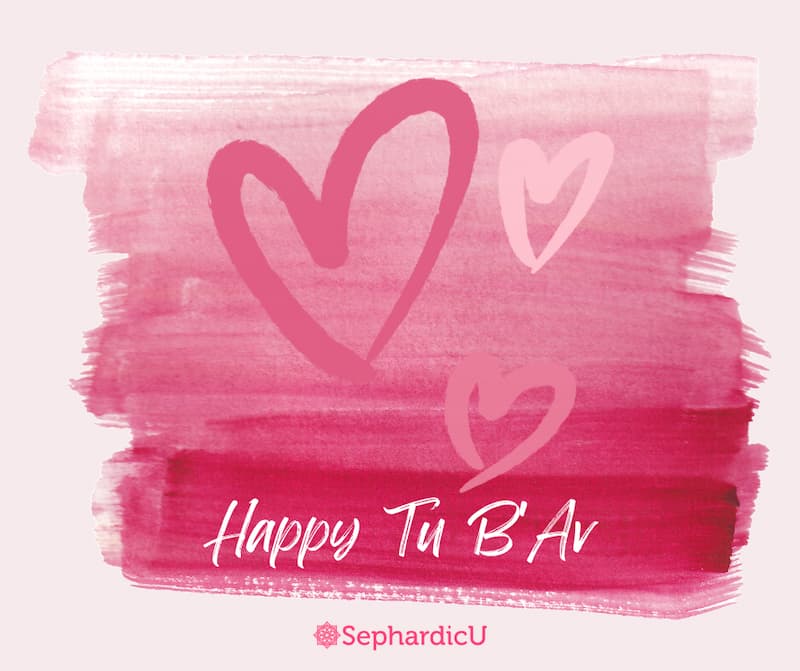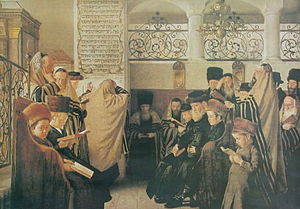As the summer sun reaches its peak, the Jewish calendar welcomes a special day filled with love, joy, and unity—Tu B’Av. Often referred to as the “Festival of Love,” Tu B’Av is a delightful celebration that falls on the 15th day of the Hebrew month of Av. With historical origins in ancient Israel and its modern interpretations, Tu B’Av holds a unique place in the hearts of Jewish communities worldwide. Join us on this journey as we explore the history, customs, and significance of Tu B’Av—a holiday cherished for its timeless message of love, compassion, and unity.
History and Significance – From Matchmaking to Unity
Tu B’Av’s origins can be traced back to ancient times in the Land of Israel. Initially associated with matchmaking, the day has evolved into a celebration of love, unity, and hope. The historical significance of Tu B’Av lies in its connection to events in Jewish history that marked a turning point for the Israelites.
One of the earliest references to Tu B’Av can be found in the Talmud, the central text of Rabbinic Judaism. According to the Talmud, Tu B’Av was a joyous holiday during the Second Temple period when young Jewish women would dress in white and dance in the vineyards. The young men of Jerusalem would go out to meet them, hoping to find a prospective partner. This custom of matchmaking and courtship in the vineyards made Tu B’Av a day of celebration and love.
Historical Context
In the Book of Judges (Judges 21:19-25), another historical context for Tu B’Av emerges. The text describes a time when the tribe of Benjamin faced a ban on intermarriage with the other tribes of Israel. However, an exception was made on Tu B’Av, allowing the daughters of Shiloh to dance in the vineyards and be courted by the young men of Benjamin. This event led to the tribe’s survival and unity within the broader Jewish community, adding another layer of significance to the day.
Additionally, the Mishnah (the oral Torah), notes that on Tu B’Av, the wood for the altar in the Temple was cut and prepared, symbolizing a fresh start and the renewal of the spiritual connection between the Jewish people and their Creator. The day also marked the end of a 40-year mourning period following the sin of the spies, who returned with a negative report about the Promised Land, leading the Israelites to wander in the wilderness. Tu B’Av became a day of optimism and new beginnings, symbolizing a new chance to embrace hope, rebuild, and foster unity among the Jewish people.
Celebration and Customs – A Joyous Festival
In ancient Israel, Tu B’Av was celebrated as a joyous holiday filled with festivities and acts of kindness. Young Jewish women would dress in white garments, adorned with festive crowns of flowers, and dance in the vineyards. The young men of the community would join them, seeking future partners, and the atmosphere was filled with love, hope, and celebration.
Although the custom of dancing in the vineyards may not be widely practiced in the same manner today, the essence of Tu B’Av remains—a day dedicated to expressing love, appreciation, and kindness to all relationships, whether romantic, familial, or platonic.
In contemporary times, Tu B’Av has evolved into a day of communal celebrations and gatherings. Jewish communities around the world come together to mark the occasion with festive meals, social events, and special services at synagogues. It is a time when people express their love and affection for one another and engage in acts of kindness and charity, fostering a sense of compassion and togetherness that transcends borders and beliefs.
Modern Interpretation – Embracing Love and Compassion
Today, Tu B’Av transcends its historical context and embraces a more universal celebration of love and compassion. While its origins are rooted in the quest for romantic relationships, the holiday now emphasizes the value of all relationships, regardless of their nature. It serves as a reminder that love is not limited to romantic partnerships but extends to encompass familial bonds, friendships, and the interconnectedness of all human beings.
On Tu B’Av, acts of charity and goodwill are encouraged, fostering a sense of compassion and togetherness that unites people from all walks of life. It is a day when individuals are encouraged to express their love and appreciation for those around them, strengthening the bonds within their communities and spreading acts of kindness throughout the world.
Tu B’Av and Valentine’s Day – A Difference in Origins and Celebrations
While both Tu B’Av and Valentine’s Day share themes of love and affection, they originate from different historical and cultural contexts.
Tu B’Av has its roots in ancient Jewish traditions and holds deep historical and religious significance for the Jewish people. It symbolizes unity, hope, and renewal within the Jewish community, fostering connections between individuals and embracing love in all its forms. As a day of communal celebration, the holiday emphasizes the value of compassion and the importance of forging meaningful relationships with others.
In contrast, Valentine’s Day emerged from Christian traditions and was initially linked to the feast of St. Valentine’s martyrdom. Over time, it evolved into a day focused on celebrating romantic love between partners. While Valentine’s Day is a beloved holiday celebrated worldwide, it is not associated with any specific religious or historical events.
Despite sharing some similarities in their celebration of love, Tu B’Av and Valentine’s Day each hold unique histories and cultural influences that set them apart. Tu B’Av’s connection to Jewish traditions and historical events distinguishes it as a cherished holiday among Jewish communities.
Table: A Comparison of Tu B’Av and Valentine’s Day
| Aspect | Tu B’Av | Valentine’s Day |
|---|---|---|
| Origin | Jewish tradition in Israel (Ancient Times) | Roman Christian feast (3rd century CE) |
| Established | Over two millennia* | Around 3rd century CE |
| Date | 15th of Av in Hebrew calendar* | February 14th |
| Focus | Celebration of Love and Unity | Celebration of Romantic Love |
| Historical Significance | End of mourning period and unity celebration | Feast of St. Valentine’s martyrdom |
| Customs | Joyful gatherings and acts of kindness | Exchanging cards, gifts, and romantic gestures |
| Modern Interpretation | Emphasizes love and compassion for all relationships | Focused on romantic love between partners |
| Religious Connection | Ties to Jewish traditions and historical events | Originally linked to Christian saints and later secularized |
*Tu B’Av has been celebrated for over two millennia, dating back to ancient times. The specific Gregorian calendar date varies each year due to the Hebrew calendar’s lunar cycles. *Valentine’s Day was established around the 3rd century CE, with its association to St. Valentine’s martyrdom and later secularized for its romantic connotations.
Conclusion
Tu B’Av is a cherished day on the Jewish calendar, serving as a timeless reminder of the enduring power of love, unity, and compassion. From its ancient origins as a matchmaking day to its contemporary celebration of universal love, Tu B’Av brings Jewish communities together in joyous festivities and meaningful acts of kindness.
As we commemorate Tu B’Av, let us embrace its profound message and strive to spread love and compassion to all, weaving a tapestry of unity and understanding in the fabric of our shared humanity. May the spirit of Tu B’Av inspire us to build a world where love transcends boundaries and fosters a brighter and more connected future for all.
Join us on this journey as we delve deeper into the history, customs, and significance of Tu B’Av—a day cherished for its timeless message of love, compassion, and unity. Experience the joyous festivities and heartfelt acts of kindness that exemplify the spirit of Tu B’Av and learn how this special day continues to inspire and resonate with people from all walks of life.
To access more information about holidays, click here.









Parashat Behar – Weekday Torah Reading (Moroccan TeAmim)